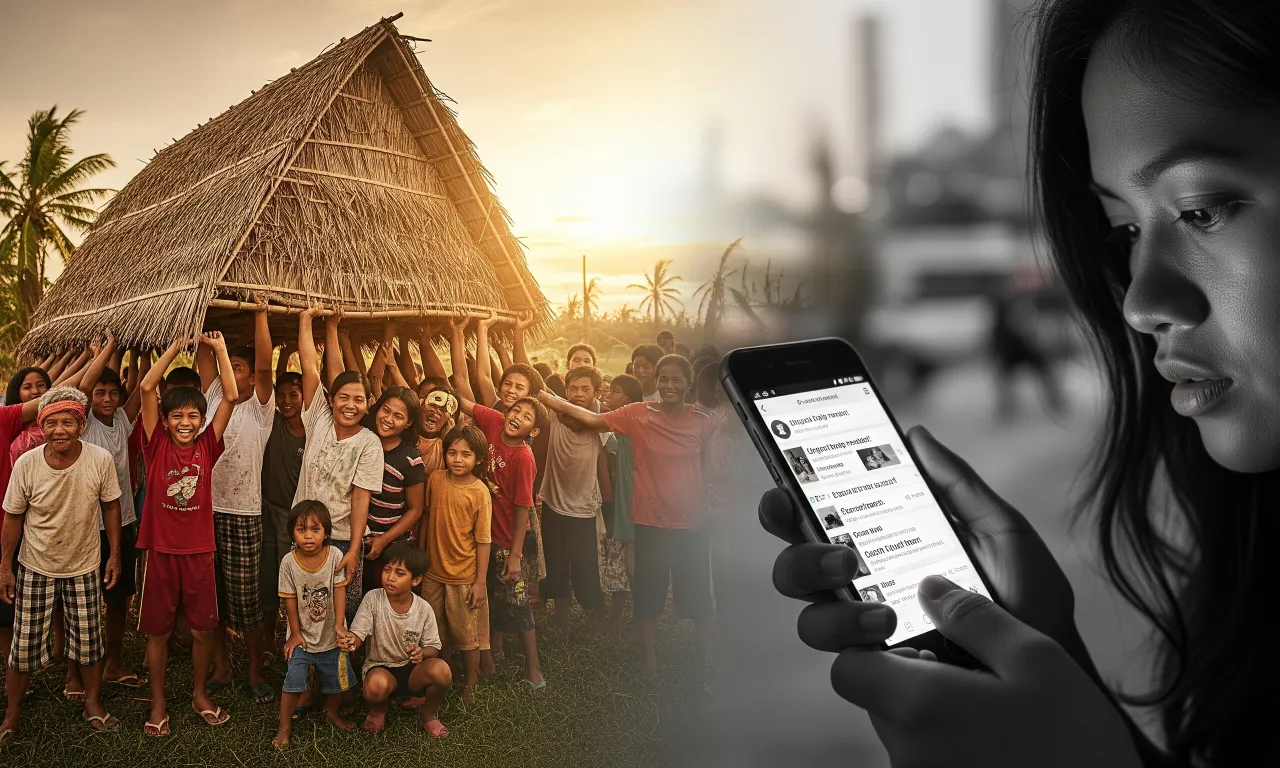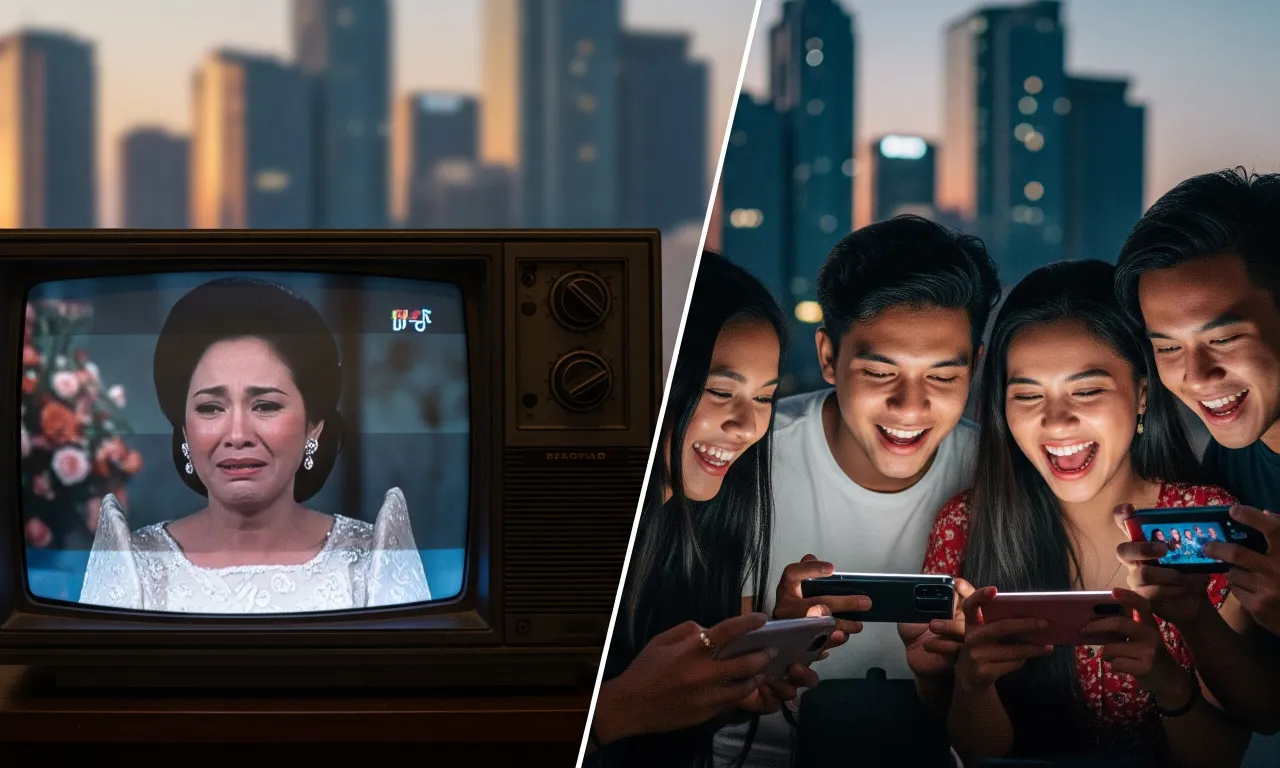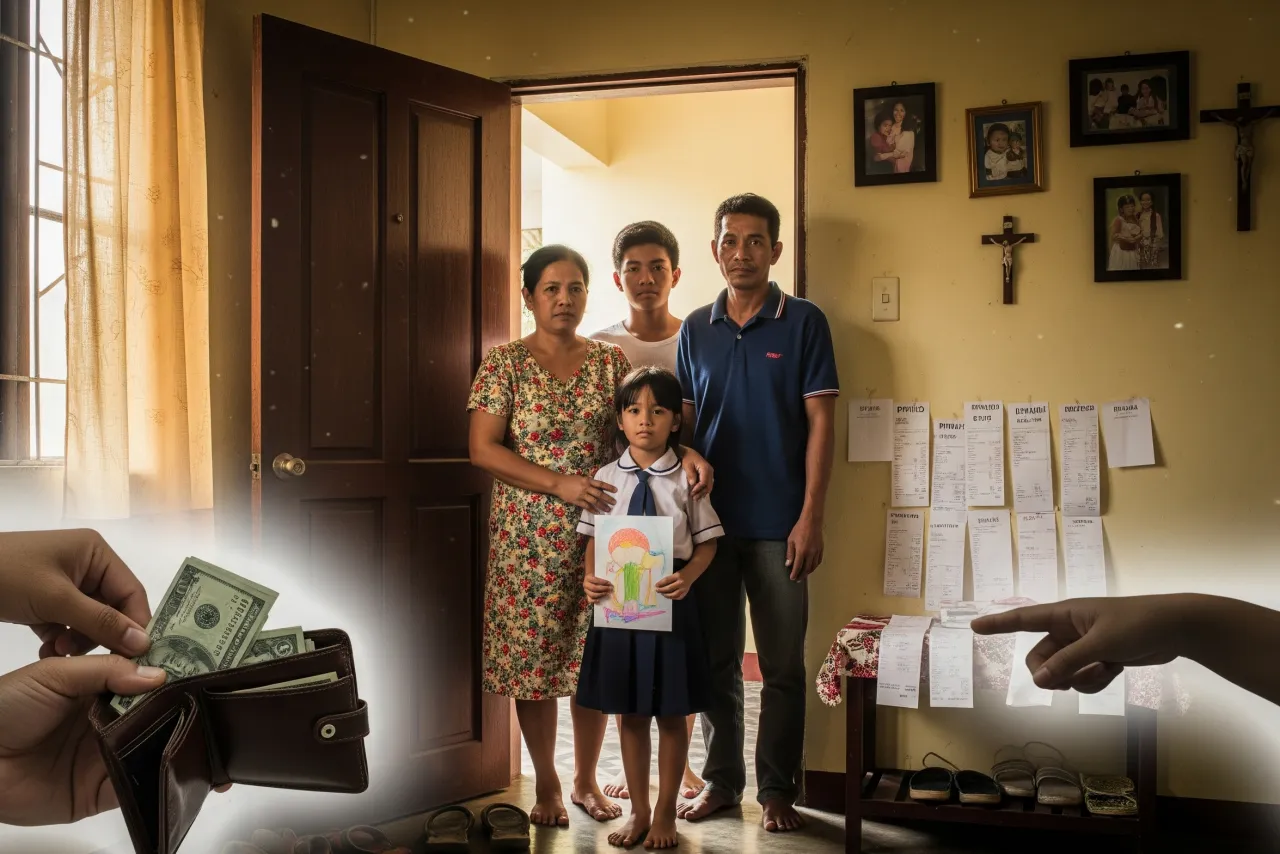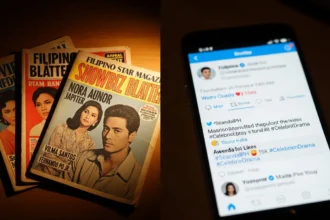💔 Is the Bayanihan Spirit Dead? A Shocking Confession
We grew up with the story of Bayanihan. We were told it was the very soul of the Filipino people. The iconic image of a whole community working together, shoulder to shoulder, to lift a nipa hut and carry it to a new location. It’s a powerful symbol of unity, strength, and unwavering community spirit. But let’s be honest. Does that legendary image still reflect our reality today? Or is the Bayanihan spirit fading, a ghost of a tradition that we only bring out for nostalgic photos and speeches? The truth is, many of us are starting to wonder: Are Filipinos losing the Bayanihan spirit? The signs are there. We see them every day, from the quiet indifference on our streets to the loud cynicism in our social media feeds. It’s a drama that cuts deep, challenging the very foundation of what we believe it means to be Filipino.
The traditional spirit was an unwritten social contract. We helped because we had to. We helped because our neighbors were our family. Here in my hometown in Sindangan, Zamboanga Peninsula, that spirit is still alive in many ways. We still share our catch and help each other during harvests.
But step into the city, look at the relentless pace of modern life, and the picture becomes blurry. The world has changed. And so, it seems, has our sense of community. The rise of social media and the harsh realities of a post-pandemic world have exposed a truth we’d rather not admit. The spirit isn’t completely gone. It’s just… different. And in many ways, it’s more fractured and fragile than ever before. This is a story about that change. It is about the subtle erosion of a cultural cornerstone and the painful reality that maybe, just maybe, the past is not our present.
🤝 The Golden Age: Lifting Houses and Hearts
Before the internet, before the phones, before the relentless pace of modern life, Bayanihan was simple. It was tangible. It was a physical act of communal labor driven by a shared sense of responsibility. You didn’t need an online post or a hashtag to start it. You just had to see a neighbor in need.
The Drama: A family needed to move their house. The community would gather. Men would line up, lift the entire structure onto their shoulders, and carry it across a field. Women would cook food, and children would cheer them on. It was a beautiful, organized chaos of muscle, laughter, and collective goodwill. No one was paid. The reward was the bond that was created. The shared meal after the work was a celebration, a testament to what a community could achieve when it worked as one.
For instance, in our province, people would gather to help a farmer harvest his crops. It was not just about the work; it was about the stories they told, the songs they sang, and the sense of belonging they shared. This spirit of cooperation was the lifeblood of rural communities. It was a pure, unadulterated form of human connection that was born out of necessity and forged by a deep-seated love for one’s neighbors.
- Physical Solidarity: The act of physically working together created strong, lasting bonds.
- Reciprocity: Help was given freely with the unspoken understanding that it would be returned when needed.
- Community First: The needs of the community were often prioritized over individual desires, fostering a powerful sense of unity.
This traditional form of Bayanihan was beautiful. It was a clear-cut, simple transaction of kindness and effort. It had no hidden costs, no social media pressures, and no cynicism. It was a perfect reflection of a culture built on interdependence and mutual respect.
📱 Modern Bayanihan: From Hands-On to Hands-Off
The world moved on, but the spirit tried to keep up. Bayanihan didn’t disappear; it just changed its medium. It migrated from the physical world to the digital realm, transforming into something different, something more complicated.
The Drama: We saw this transformation in full force during the COVID-19 pandemic. When the government was slow to act, it was the people who stepped up. Community pantries sprouted on city streets, an organized grassroots effort to feed the hungry. Volunteers sorted goods, people lined up to donate, and others took only what they needed. On social media, countless Filipinos started donation drives for frontliners, for families affected by disasters, and for people with medical emergencies. A single viral post could raise thousands, even millions, of pesos in a matter of hours. This was Bayanihan for the 21st century. It was a beautiful, powerful testament that our collective kindness was still alive, just expressed through a screen.
- Digital Empowerment: Social media and online platforms make it easier for people to ask for and give help.
- Wider Reach: A single post can reach a global audience, allowing for support to pour in from all corners of the world.
- Collective Action: Large-scale problems, like natural disasters or pandemics, can be addressed quickly and efficiently through online coordination.
This new form of Bayanihan is efficient and expansive. It proves that we can still rally together for a common cause. But it also comes with its own set of problems, a new kind of social pressure and a hidden cost that is starting to wear on people. This digital version of helping out is more of a transaction than a deep connection. You press a button, donate money, and you’re done. There is no physical touch, no shared laughter, and no celebratory meal at the end.
💀 The Dark Side: Compassion Fatigue and Selective Kindness
While modern Bayanihan has its moments of brilliance, a troubling new trend is emerging. A phenomenon known as “Bayanihan fatigue” or “compassion fatigue” is starting to set in. People are simply getting tired.
The Drama: We are constantly bombarded with calls for help on our social media feeds. A new plea for a sick child, a new campaign for a family displaced by a fire, a new fundraiser for a student in need. The sheer volume of need is overwhelming. For many, it has become a daily choice: which cause do I support? The result is a growing sense of helplessness and cynicism. People are becoming more selective with who they help, often out of a genuine fear of being scammed or simply because their own resources are limited. The online culture of “paki-sana all” (wish for everyone) also adds a new layer of pressure and resentment. When one person receives a donation, others may feel left out, leading to whispers and gossip. This is a far cry from the pure, collective spirit of old.
- Online Distrust: The prevalence of online scams has made people wary of donation drives and charitable causes.
- Overwhelming Need: The constant barrage of requests for help leads to a sense of burnout and emotional detachment.
- Public Shaming: People who choose not to donate or participate in a cause may be shamed or criticized, creating a toxic environment.
The digital stage, while it can amplify kindness, can also amplify our biases, our insecurities, and our cynicism. It turns Bayanihan from a communal responsibility into a personal decision, and a decision, sadly, that is often fraught with guilt and anxiety.
🤔 FAQs about the Bayanihan Spirit
Q1: So, are Filipinos losing the Bayanihan spirit? A: It’s more complex than a simple yes or no. The traditional, physical form of Bayanihan is less common in modern, urban settings. However, the spirit has evolved into a new, digital form, seen in online fundraising and social media campaigns. The debate is whether this new form is as strong and authentic as the old.
Q2: What is “Bayanihan fatigue”? A: “Bayanihan fatigue” is a term used to describe the emotional and psychological burnout many Filipinos feel from being constantly exposed to calls for help on social media. The overwhelming volume of need can lead to a sense of helplessness and a reluctance to give.
Q3: How can we revive the Bayanihan spirit in our communities? A: Reviving the spirit requires a return to small-scale, personal actions. We can start by simply helping our neighbors, participating in local community clean-ups, and building real-life connections, not just online ones. It’s about building trust brick by brick, not through a viral post.
🇵🇭 A New Chapter for the Filipino Soul
The question are Filipinos losing the Bayanihan spirit is a hard one to answer. Maybe we aren’t losing it; maybe we are just changing it. The core of our generosity is still there, but it is now filtered through the complexities of modern life. We have to be honest with ourselves. The old way of doing things may not be coming back. The challenge for us now is to build a new kind of Bayanihan, one that is both compassionate and sustainable. We must find a way to balance the efficiency of digital kindness with the warmth and connection of physical solidarity. The future of our community spirit depends on it.
Do you think we are still as willing to help our neighbors as we were in the past? Share your thoughts below! 👇








